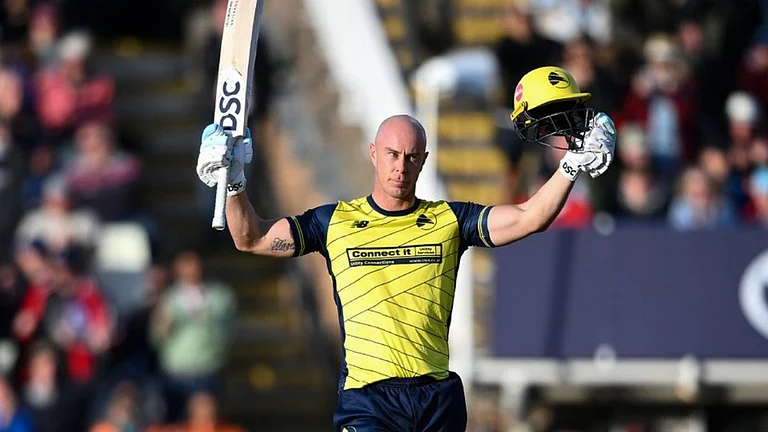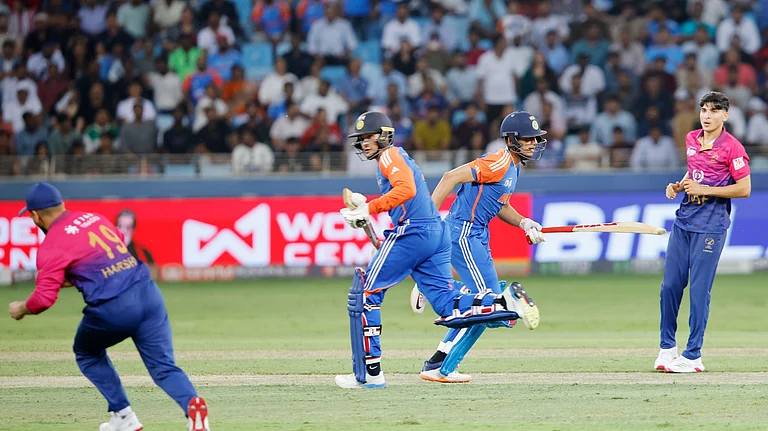After Mathai...
- Sujata Singh: Topper of the 1976 IFS batch; non-controversial, has strong political connections
- Jaimini Bhagwati: Of the 1976 IFS batch; strong on economic issues; has served with the World Bank
- S. Jaishankar: Of the 1977 IFS batch; impressed many with his effective handling of China affairs
- Sudhir Vyas: Topped the 1977 IFS batch; has experience of S. Asia
***
The selection of bureaucrats for key positions seldom generates interest beyond the contenders and their family and friends. Not so when the foreign secretary is being chosen. For some years now, this South Block appointment has been watched with enthusiasm by those in the foreign policy establishment as well as others. Ranjan Mathai, the current incumbent, ends his tenure on July 31. Already, speculation, analysis—and some lobbying—has begun, with the aim of ensuring that a favourite gets the top post in the ministry of external affairs.
It is bruited in South Block circles that the three frontrunners are Sujata Singh, the ambassador to Germany; S. Jaishankar, the ambassador to China; and Jaimini Bhagwati, the Indian high commissioner in London. One other diplomat in the reckoning is Sudhir Vyas, secretary (west) at the MEA headquarters. Of course, the selection process will sieve a much bigger pool, comprising diplomats of the 1976 and 1977 batches of the Indian Foreign Service (IFS).
Sujata, the topper of the 1976 IFS batch, has garnered a wide range of experience and expertise, especially of western Europe. Bhagwati, of the same batch as Sujata’s, is said to have an edge because of his understanding of economics. Jaishankar, of the 1977 IFS batch, not only has experience of serving in neighbouring countries, he is considered strong on the West, particularly in dealing with the United States. Vyas topped the 1977 IFS batch. He has served in the neighbourhood—Pakistan and Bhutan—and is said to have the advantage of being posted at headquarters.
Most MEA-watchers believe that the next foreign secretary will be from the first three. For, besides their capabilities—something that is widely acknowledged—they also have the right political connections. Sujata’s father, T.V. Rajeshwar, is a former IB chief and has also served as governor of Uttar Pradesh. Her connection to the Congress leadership is well-known. Jaishankar is the son of the late K. Subrahmanyam, one of India’s foremost strategic thinkers, and is well cued in to key members of the ruling party. Bhagwati, who has served with the World Bank, is said to be close to Prime Minister Manmohan Singh.
Much of the confusion and speculation surrounding the choice of the next foreign secretary stems from the government’s own policy, which many see as arbitrary and lacking in transparency. For choosing a foreign secretary, two key elements are said to be considered by the political leadership in general and the prime minister in particular: seniority and merit. Seniority is easily determined. Merit, however, is very difficult to even define, leave alone determine, especially in the context of diplomacy and its complexities. So the choice involves a lot of subjectivity.
As defined by procedure, the foreign secretary is chosen by a committee comprising the prime minister, the home minister and the foreign minister. But, MEA officials point out, a lot depends on the stature and heft of the foreign minister. An “assertive” foreign minister, they say, may have greater leverage that an “aspirational” minister, who would leave everything to the prime minister. Ultimately, of course, the prime minister’s choice prevails.
In the recent past, candidates like Shyam Saran, of the 1970 IFS batch, and Shiv Shankar Menon, of the 1972 IFS batch, were chosen on the basis of merit rather than strict seniority. These selections had caused a lot of heartburn among those who lost out despite their seniority. Some resigned. One of them, Veena Sikri, then posted as India’s high commissioner to Bangladesh, went on long leave and later challenged the government’s decision before the Central Administrative Tribunal. She says, “The government has every right to choose the person it wants as foreign secretary. But the selection must be a transparent process and others should know why they are being overlooked. Only a transparent selection process will motivate people working in the government.”
The government then reverted to choosing mainly on the basis of seniority. Mathai, and his predecessor Nirupama Rao, were both chiefly chosen on where they stood on the IFS seniority roster. Some former diplomats point out that, ideally, a foreign secretary should be a person who can get on with a wide variety of people—politicians, parliamentarians, foreign diplomats and envoys as well as colleagues in the diplomatic corps. The incumbent must have the ability to be accommodative on certain issues but also show firmness and resolve on others. “Irrespective of who is chosen as the foreign secretary, he can never be a rubber stamp,” says former Indian diplomat Talmiz Ahmad. For, he says, the foreign secretary provides crucial inputs to the PM.
But what makes the foreign secretary’s selection so special and why does it generate so much interest among so many? Unlike his counterparts in other departments or ministries, the foreign secretary is also the chief administrative officer and heads the Indian Foreign Service (IFS). Therefore, he enjoys a certain gravitas among his counterparts in other ministries. The other reason for the growing interest in the choice of the foreign secretary is because the perception of Indian diplomacy and foreign policy has changed. In the past, people associated the diplomatic service mainly with glamour—foreign postings, well-groomed people moving in elite international circuits. But much of that has changed, especially after the Pokhran II nuclear tests of May 1998, the aftermath of which naturally saw wide media coverage of India’s engagement with foreign powers and regional balances. Even regional media networks covered these engagements, and rights groups, anti-nuclear lobbies and others began to follow and debate diplomatic decisions. Regional parties, which have found increasing play in an era of coalition politics, have also started paying attention to the country’s diplomatic moves. Also, with the states playing a more assertive role on issues which often overlap with foreign policy, such as economic diplomacy, climate change, global terrorism and human rights, interest in the subject seems to have widened.
So will the next foreign secretary be a lady or a gentleman? No clue yet. And while most are trying to hedge their bets on the next incumbent, it will come as a huge surprise if the political leadership breaks the current trend of going by seniority plus merit.


























